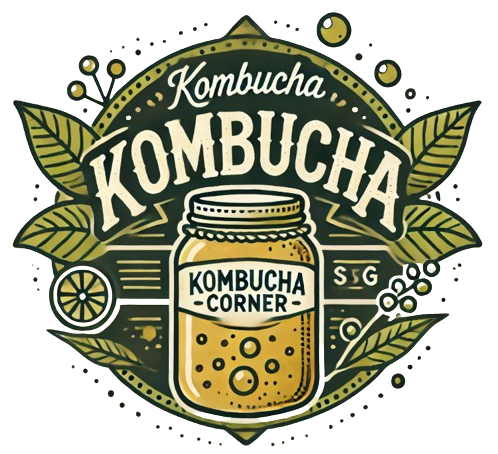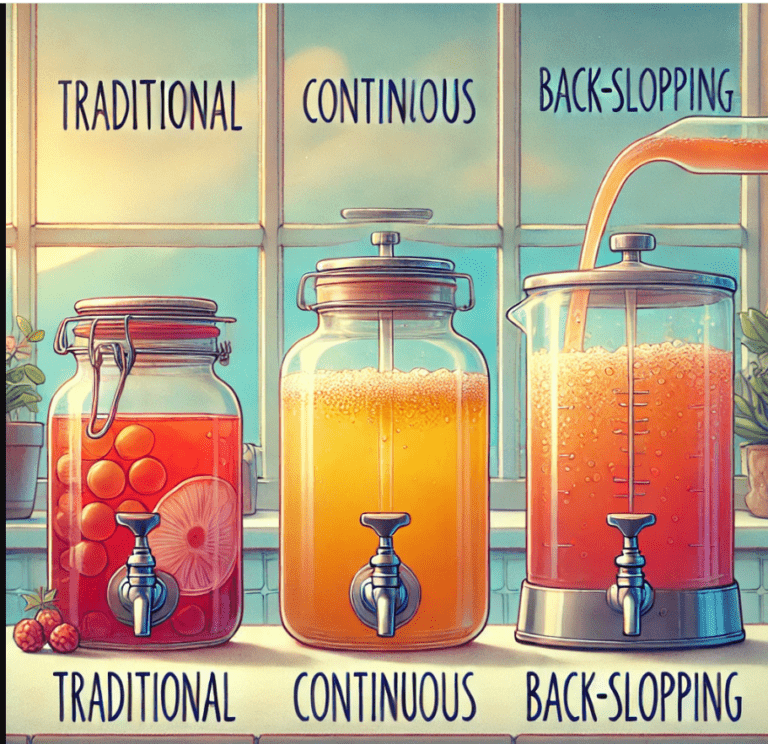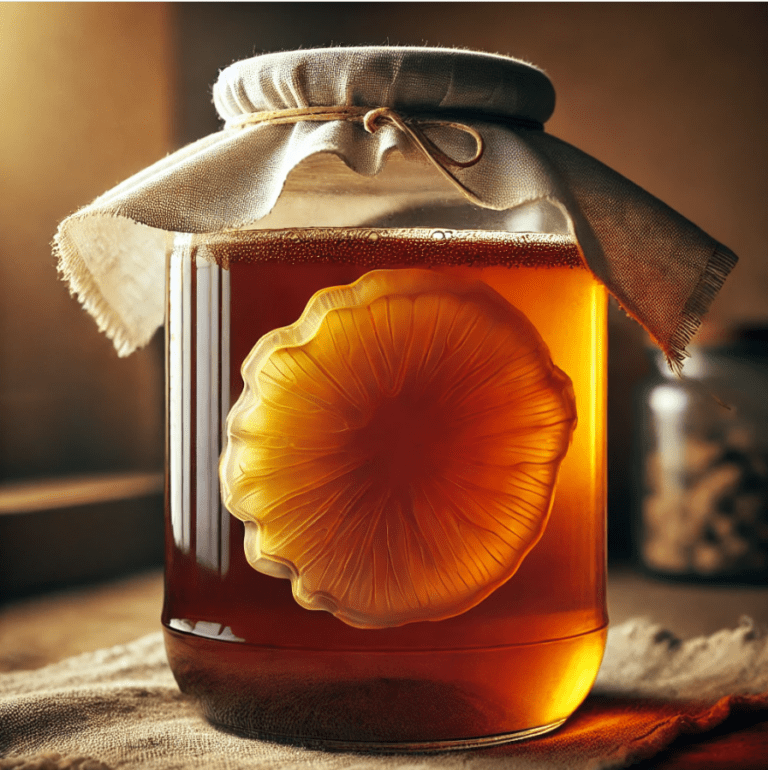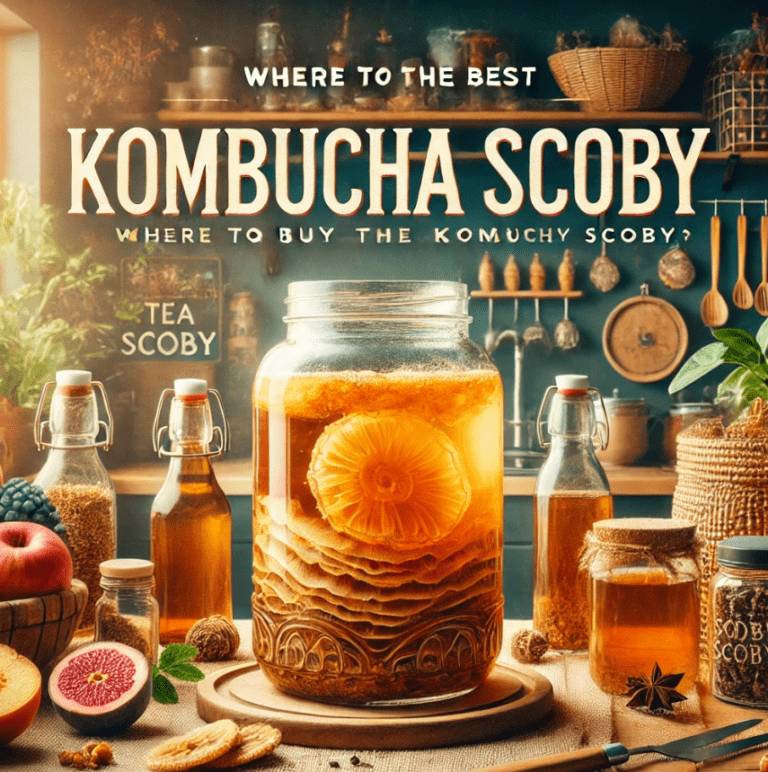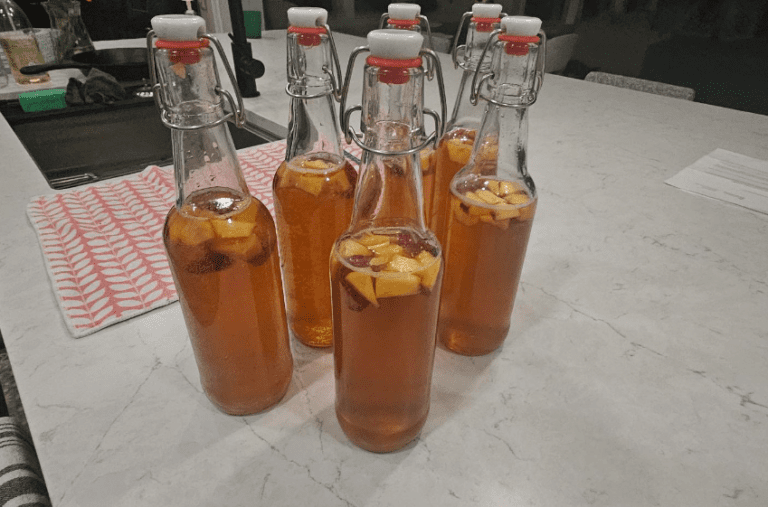What Is Hard Kombucha? Everything You Need to Know About This Boozy Brew
Intro: Move over, hard seltzer—there’s a new boozy beverage in town, and it’s here to stay. If you’ve wandered down the alcohol…
Intro: Move over, hard seltzer—there’s a new boozy beverage in town, and it’s here to stay. If you’ve wandered down the alcohol aisle lately, you may have noticed an intriguing new player: hard kombucha. But what exactly is this fizzy, fermented drink, and why is it making waves in the health-conscious crowd? Let’s dive into everything you need to know about hard kombucha, from its origins and benefits to why it might just be your new favorite drink. In previous articles we have talked about “Can Kombucha Make you Drunk“, and that article would be very different then this one.
What Is Hard Kombucha?
Hard kombucha is the slightly tipsy cousin of your favorite probiotic tea. Like traditional kombucha, it starts with a base of tea, sugar, and a SCOBY (symbiotic culture of bacteria and yeast) that ferments into a tangy, effervescent beverage. However, what sets hard kombucha apart is a second round of fermentation, where additional sugar and yeast are added. This process boosts the alcohol content, typically landing between 4% and 8% ABV, though some brands crank it up even higher[source],[source].
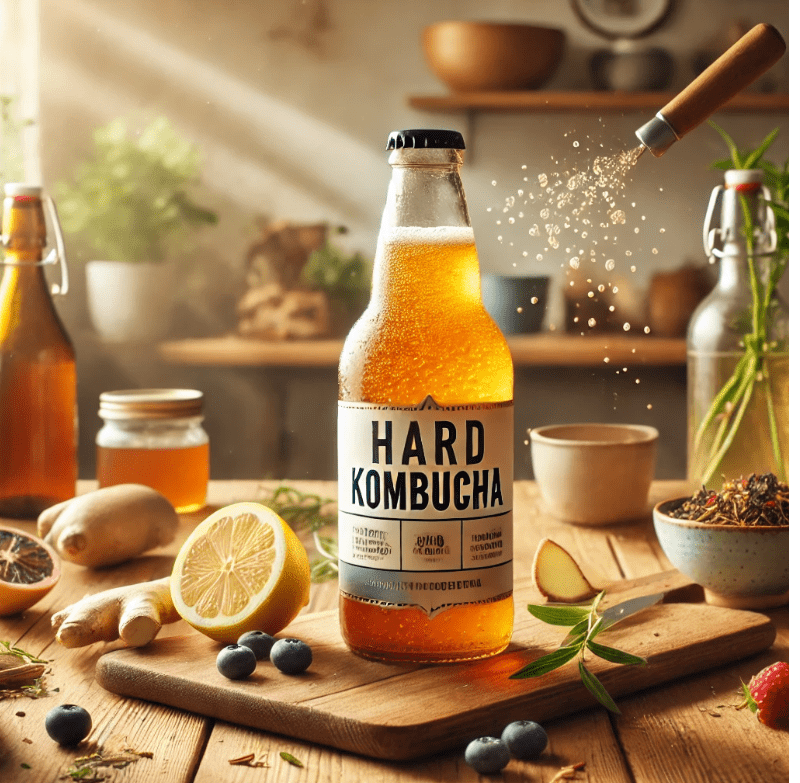
The Rise of Hard Kombucha: Why It’s Trending
In recent years, health-conscious consumers have sought alternatives to beer and sugary cocktails, leading to the rise of hard kombucha. It combines the gut-friendly benefits of regular kombucha with the buzz of alcohol, making it an appealing option for those who want to indulge without completely abandoning their wellness goals. The variety of flavors—ranging from fruity and spicy to floral and herbal—also adds to its popularity,[source].
Does Hard Kombucha Retain Its Health Benefits?
One of the big questions surrounding hard kombucha is whether it still offers the health benefits of its non-alcoholic counterpart. The answer is a bit mixed. While the probiotics in kombucha are generally resilient, some may be compromised by the higher alcohol content. That said, many hard kombucha brands still retain live cultures, antioxidants, and organic acids that support gut health and detoxification.
How Does It Taste?
The flavor of hard kombucha can be quite diverse, which is part of its charm. Depending on the brand and fermentation process, you might find yourself sipping something that tastes like a fruity cider, a spicy ginger beer, or a tangy wild ale. For those new to kombucha, starting with a milder flavor like JuneShine’s Pineapple Orange or Boochcraft’s Ginger Lime might be the way to go,[source].
Popular Hard Kombucha Brands to Try
- JuneShine: Known for its beachy vibes and middle-of-the-road ABV of around 6%, JuneShine offers flavors like Acai Berry and Mango Daydream that are crowd-pleasers.
- Flying Embers: This brand not only delivers a strong kick with options up to 9% ABV but also supports environmental causes like wildfire prevention, making your drink choice a little sweeter.
- Strainge Beast: Created by Sierra Nevada Brewing, this hard kombucha is beloved for its unique flavor combos like Ginger Lemon & Hibiscus. It’s a great option for beer lovers transitioning to kombucha.
Nutritional Information: What’s in Your Hard Kombucha?
Hard kombucha is generally lower in calories and sugar compared to many other alcoholic beverages, making it a popular choice among those watching their intake. Most varieties range between 70 to 150 calories per serving, depending on the added ingredients and alcohol content. It’s also typically lower in carbs, making it a lighter option compared to beer or cocktails. However, it’s always a good idea to check the label as some brands might sneak in extra sugars[source].
How to Make Hard Kombucha at Home
For the DIY enthusiasts out there, brewing your own hard kombucha can be a fun and rewarding process. It allows you to control the flavors, alcohol content, and fermentation time, resulting in a truly personalized boozy brew. Here’s a step-by-step guide to get you started.
Ingredients You’ll Need:
- Regular Kombucha: Start with a batch of homemade kombucha or a high-quality store-bought version.
- Additional Sugar: To boost alcohol content, you’ll need to add more sugar for the second fermentation.
- Champagne Yeast: This type of yeast is preferred for making hard kombucha because it ferments well at higher alcohol levels[source],[source].
- Flavorings: Fresh fruits, herbs, or spices to customize your hard kombucha.
Step-by-Step Guide:
- Brew Your Kombucha: If you’re starting from scratch, you’ll need to brew a regular batch of kombucha. This involves fermenting sweetened tea with a SCOBY for about 7-14 days, depending on your taste preference.
- Add Sugar and Yeast: Once your kombucha is brewed, it’s time for the second fermentation. Transfer the kombucha to a sanitized fermentation vessel, add additional sugar (about 1/4 cup per gallon), and sprinkle in champagne yeast. The added sugar provides food for the yeast, which will convert it into alcohol during fermentation.
- Ferment Again: Seal your fermentation vessel with an airlock to prevent contamination, and let it sit at room temperature for 7-14 days. The longer it ferments, the higher the alcohol content will be. Taste periodically to check the flavor and alcohol level.
- Flavor and Bottle: After the second fermentation, it’s time to add your flavorings. Pour the hard kombucha into bottles, leaving some headspace, and add fresh fruits, herbs, or spices. Seal the bottles and let them sit at room temperature for another 3-7 days for the flavors to infuse.
- Chill and Enjoy: Once the flavors have developed to your liking, refrigerate the bottles to stop the fermentation process. Your homemade hard kombucha is now ready to be enjoyed!
Tips for Success:
- Sanitize Everything: Cleanliness is crucial when brewing kombucha, especially during the second fermentation, to prevent unwanted bacteria or mold. You can find sanitizers like ONE STEP on amazon, or click here.
- Monitor Alcohol Content: Use a refractometer or hydrometer to measure the alcohol level if you want to be precise. This helps you track the sugar conversion and estimate the ABV of your brew.
- Experiment with Flavors: The beauty of DIY is the ability to experiment. Try different fruits, herbs, or even hops to create a flavor profile that suits your taste.
- Start Small: If you’re new to brewing, start with smaller batches to avoid waste and better manage the process. As your SCOBY grows and your confidence increases, you can scale up.
Pairing Suggestions: Enhance Your Hard Kombucha Experience
Looking to elevate your hard kombucha experience? Try pairing a citrusy kombucha like JuneShine’s Acai Berry with a light summer salad or seafood. For spicier blends like Boochcraft’s Ginger Lime, consider pairing with Asian cuisine or grilled chicken for a flavorful contrast. The versatility of hard kombucha makes it a delightful companion to a variety of dishes.
Hard Kombucha for Different Palates
Not everyone has the same taste preferences, so here’s a quick guide to help you choose the right hard kombucha for your palate:
- Sweet Tooth: Try Kyla’s Lavender Lemonade, which balances sweetness with a tangy twist.
- Tart Lovers: Strainge Beast’s Ginger Lemon & Hibiscus offers a bold, tangy profile with a ginger kick.
- New to Kombucha: Jiant’s light and crisp flavors are perfect for beginners, offering a mild introduction to the world of kombucha.
Sustainability and Ethical Considerations
Many consumers today are mindful of the environmental impact and ethical practices of the products they consume. Hard kombucha brands like Flying Embers not only craft delicious beverages but also prioritize sustainability. Flying Embers, for example, donates a portion of its profits to wildfire prevention efforts. Choosing these brands allows you to enjoy a drink that’s both good for you and good for the planet.
Common Mistakes to Avoid When Brewing
Avoid over-carbonation by regularly checking the pressure in your bottles during the second fermentation. This helps prevent bottle explosions—a common issue with kombucha due to its unpredictable fermentation. Also, be cautious with flavor additions—too much sugar can lead to overly sweet or fizzy results. Finally, keep your brewing environment clean and well-sanitized to prevent contamination.
Conclusion: Whether you’re a kombucha aficionado or a curious homebrewer, making hard kombucha offers a unique blend of creativity and science. Plus, it’s a fantastic way to impress your friends at your next gathering!
